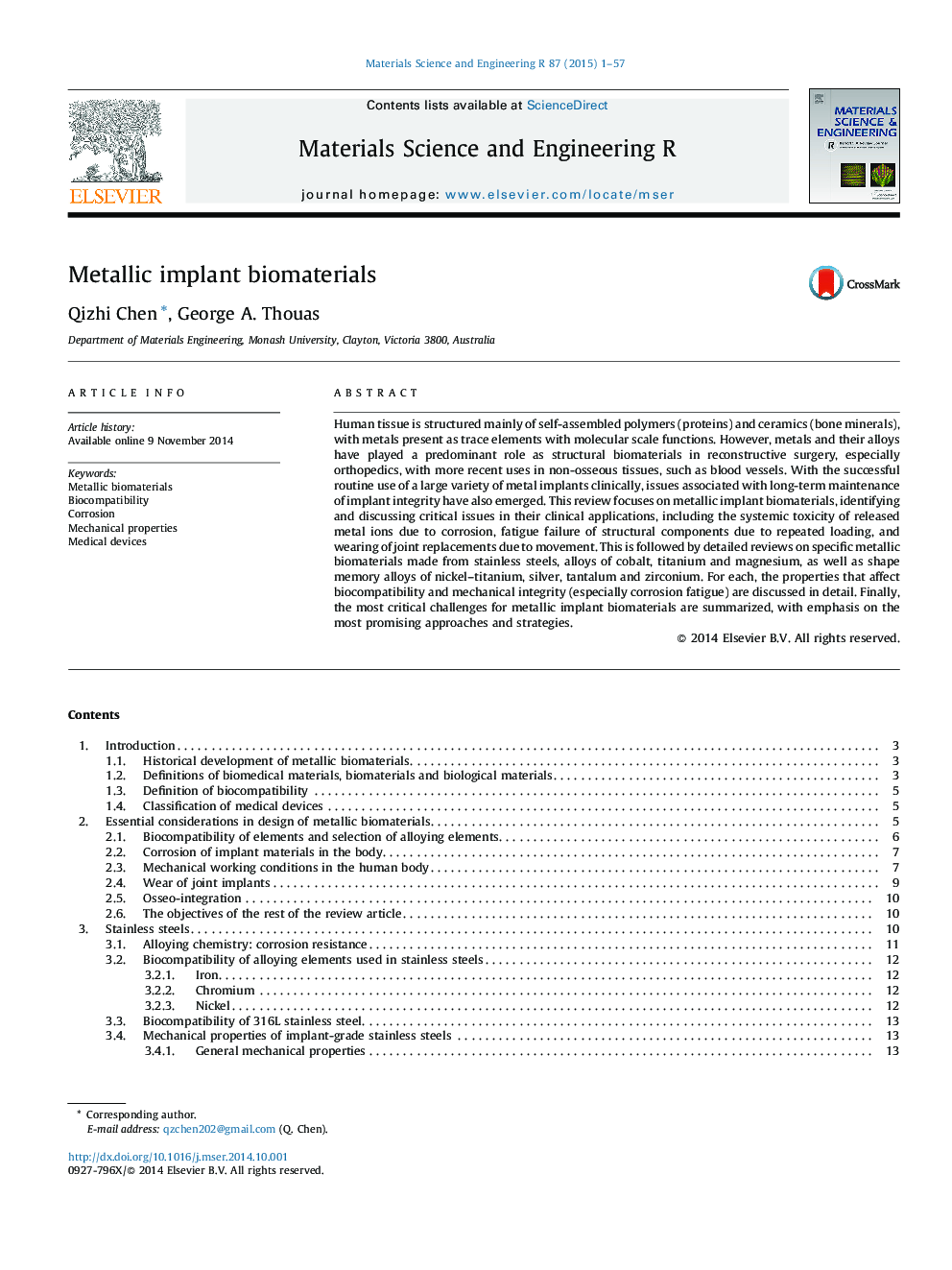| Article ID | Journal | Published Year | Pages | File Type |
|---|---|---|---|---|
| 1532359 | Materials Science and Engineering: R: Reports | 2015 | 57 Pages |
Abstract
Human tissue is structured mainly of self-assembled polymers (proteins) and ceramics (bone minerals), with metals present as trace elements with molecular scale functions. However, metals and their alloys have played a predominant role as structural biomaterials in reconstructive surgery, especially orthopedics, with more recent uses in non-osseous tissues, such as blood vessels. With the successful routine use of a large variety of metal implants clinically, issues associated with long-term maintenance of implant integrity have also emerged. This review focuses on metallic implant biomaterials, identifying and discussing critical issues in their clinical applications, including the systemic toxicity of released metal ions due to corrosion, fatigue failure of structural components due to repeated loading, and wearing of joint replacements due to movement. This is followed by detailed reviews on specific metallic biomaterials made from stainless steels, alloys of cobalt, titanium and magnesium, as well as shape memory alloys of nickel-titanium, silver, tantalum and zirconium. For each, the properties that affect biocompatibility and mechanical integrity (especially corrosion fatigue) are discussed in detail. Finally, the most critical challenges for metallic implant biomaterials are summarized, with emphasis on the most promising approaches and strategies.
Related Topics
Physical Sciences and Engineering
Materials Science
Electronic, Optical and Magnetic Materials
Authors
Qizhi Chen, George A. Thouas,
